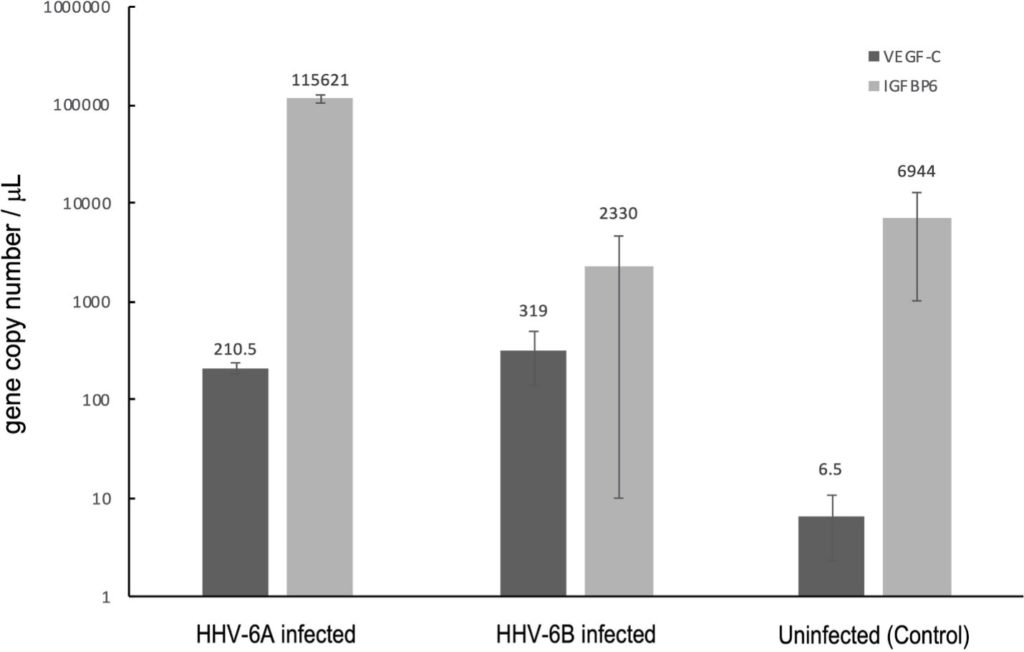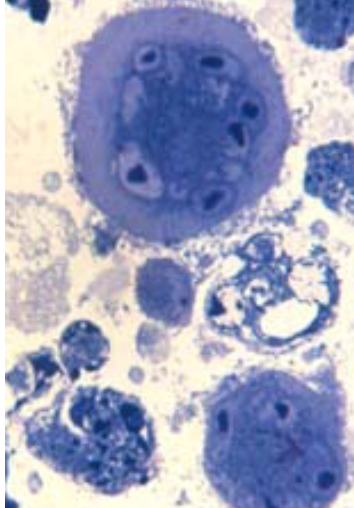Both HHV-6A/B infect neurons and glia. A new study from the University of Arkansas and Johns Hopkins University examines their cellular tropism and consequences of infection with each virus in various neuronal and glial cells, in vitro. The main findings are:
- HHV-6A and HHV-6B both can productively infect glial cells, as confirmed by both transmission electron microscopy and qPCR
- HHV-6A and HHV-6B both can infect glutamatergic and dopaminergic neurons, as confirmed by both transmission electron microscopy and qPCR
- Neither HHV-6A nor HHV-6B can infect GABAergic neurons; the reason is unclear, since such neurons express both CD134 and CD46
- Both viruses produce cytopathic effects (CPEs) in each of the different cell types, CPEs that differ in their time course and morphology: for example, HHV-6A is more likely to produce cell aggregation and cell death, and only HHV-6A causes syncytia formation
- In differentiated human neural stem cells, HHV-6A infection generates a TLR9 response and IL-10 production, whereas HHV-6B generates a marked increase in TNF-α expression; neither virus generates expression of IL-1ß or IL-6.
- As for growth factors, both HHV-6B and HHV-6A upregulated VEGF-C levels significantly, compared to uninfected cells (Figure 1)
- HHV-6A but not HHV-6B generated expression of another growth factor, insulin-like growth factor binding protein 6 (Figure 1)
- Of the three frequently-offered hypotheses as to how either virus might induce epileptogenesis— the excitotoxicity hypothesis, the glutamate reuptake dysfunction hypothesis, and the inhibitory interneuron dysfunction hypothesis—the experiments provide the greatest support for the first hypothesis, and little for the last.

Figure 1 – HHV-6A and HHV-6B infection of neural stem cells increases VEGF-C significantly compared to controls. Only HHV-6A infection increases IGFBP6.
Given the growing evidence that these viruses may be one of the causes of several important neurological diseases, this report of in vitro experiments is of considerable interest. However, the in vitro evidence does not necessarily indicate how the viruses may act in vivo.
Read the full paper: Bahramian 2022

